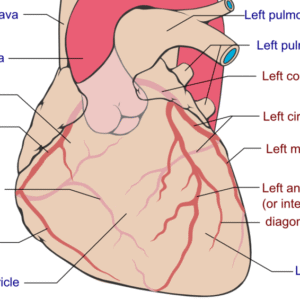Cardiology > Electrophysiology Procedures
Electrophysiology Procedures
Background
Electrophysiology (EP) procedures are specialized cardiac interventions that evaluate and treat electrical conduction disorders of the heart. Using intracardiac catheters, programmed electrical stimulation, and mapping techniques, EP studies diagnose arrhythmias and guide therapeutic interventions such as catheter ablation, pacemaker implantation, or defibrillator placement.
They serve both diagnostic and therapeutic roles—identifying abnormal conduction pathways, assessing arrhythmia mechanisms, and delivering curative treatment when possible. EP procedures are integral to modern arrhythmia management and patient-specific rhythm control strategies.
Classification/Types
Diagnostic Electrophysiology Study (EPS)
Intracardiac catheter-based study.
Evaluates conduction pathways, arrhythmia mechanisms, and drug response.
Catheter Ablation
Radiofrequency or cryoablation used to destroy arrhythmogenic foci or pathways.
Commonly performed for supraventricular tachycardia (SVT), atrial fibrillation (AF), atrial flutter, and ventricular tachycardia (VT).
Pacemaker Implantation
Permanent pacing for bradyarrhythmias, AV block, or sick sinus syndrome.
Can be single-chamber, dual-chamber, or biventricular (cardiac resynchronization therapy).
Implantable Cardioverter-Defibrillator (ICD) Implantation
Prevents sudden cardiac death by detecting and terminating life-threatening VT/VF.
Indicated in survivors of cardiac arrest, sustained VT, or high-risk cardiomyopathy patients.
Cardiac Resynchronization Therapy (CRT)
Specialized pacing to improve ventricular synchrony in heart failure with reduced ejection fraction and wide QRS complexes.
Advanced Mapping Techniques
3D electroanatomic mapping to localize arrhythmogenic tissue.
Intracardiac echocardiography assists with visualization and safety.
Clinical Rationale
Arrhythmias result from abnormal impulse generation, abnormal conduction, or reentry circuits. EP procedures provide direct intracardiac recordings, permitting detailed assessment of conduction properties. Ablation disrupts these circuits, while devices such as pacemakers and ICDs restore or regulate rhythm.
Indications
Symptomatic supraventricular tachycardia (SVT) or atrial flutter.
Symptomatic or drug-refractory atrial fibrillation.
Sustained monomorphic ventricular tachycardia or symptomatic ventricular ectopy.
Syncope of unexplained origin with suspected arrhythmic etiology.
High-grade atrioventricular block or symptomatic bradycardia requiring pacing.
Secondary or primary prevention of sudden cardiac death in high-risk patients.
Heart failure patients meeting criteria for CRT.
Contraindications
Active infection (absolute for device implantation).
Uncontrolled coagulopathy or bleeding disorders.
Severe comorbidities precluding procedural risk.
Patient refusal or inability to adhere to post-procedure care.
Diagnostic Value and Efficacy
EPS: Identifies arrhythmia mechanism, inducibility, and risk stratification.
Ablation: >90% success for AV nodal reentrant tachycardia (AVNRT) and typical atrial flutter; variable rates for atrial fibrillation.
Pacemakers: Significantly improve symptoms and quality of life in bradyarrhythmias.
ICDs: Reduce mortality in high-risk patients.
CRT: Improves symptoms, left ventricular function, and survival in eligible heart failure patients.
Procedure and Technique
Preparation: Anticoagulation review, imaging studies, anesthesia plan.
Catheter Insertion: Via femoral, subclavian, or jugular venous access.
Mapping and Recording: Intracardiac ECG tracings and stimulation protocols.
Intervention: Ablation, device implantation, or pacing as indicated.
Post-Procedure Monitoring: Hemodynamic observation, device interrogation, anticoagulation management.
Physical Exam Findings Correlated
Vital Signs
Tachycardia, bradycardia, or hemodynamic instability during arrhythmia.
General Appearance
Dizziness, palpitations, syncope, or distress from tachyarrhythmias.
Cardiovascular System
Irregular pulse, cannon A waves, variable intensity of heart sounds.
Murmur associated with structural heart disease (e.g., mitral regurgitation in AF).
Neurological System
Syncope, seizure-like activity, or confusion associated with ventricular arrhythmias.
Advantages
Definitive arrhythmia diagnosis and mechanism identification.
Curative potential with catheter ablation.
Life-saving therapy with ICDs.
Symptomatic and survival benefit with CRT in selected patients.
Limitations
Invasive with procedural risks (bleeding, vascular injury, perforation).
Ablation success may vary (e.g., AF recurrence).
Device-related complications (lead malfunction, infection).
Lifelong follow-up required for device patients.
Complications
Vascular complications: hematoma, pseudoaneurysm.
Cardiac perforation and tamponade.
Thromboembolism or stroke.
Infection (especially with device implants).
Arrhythmia induction or conduction system injury.
Follow-Up and Clinical Decision-Making
Short-term: Monitor for bleeding, arrhythmia recurrence, and device function.
Long-term: Device interrogations, anticoagulation in AF, periodic echocardiography in CRT.
Therapy adjustments based on recurrence or progression of disease.
Stay on top of medicine. Get connected. Crush the boards.
HMD is a beacon of medical education, committed to forging a global network of physicians, medical students, and allied healthcare professionals.

